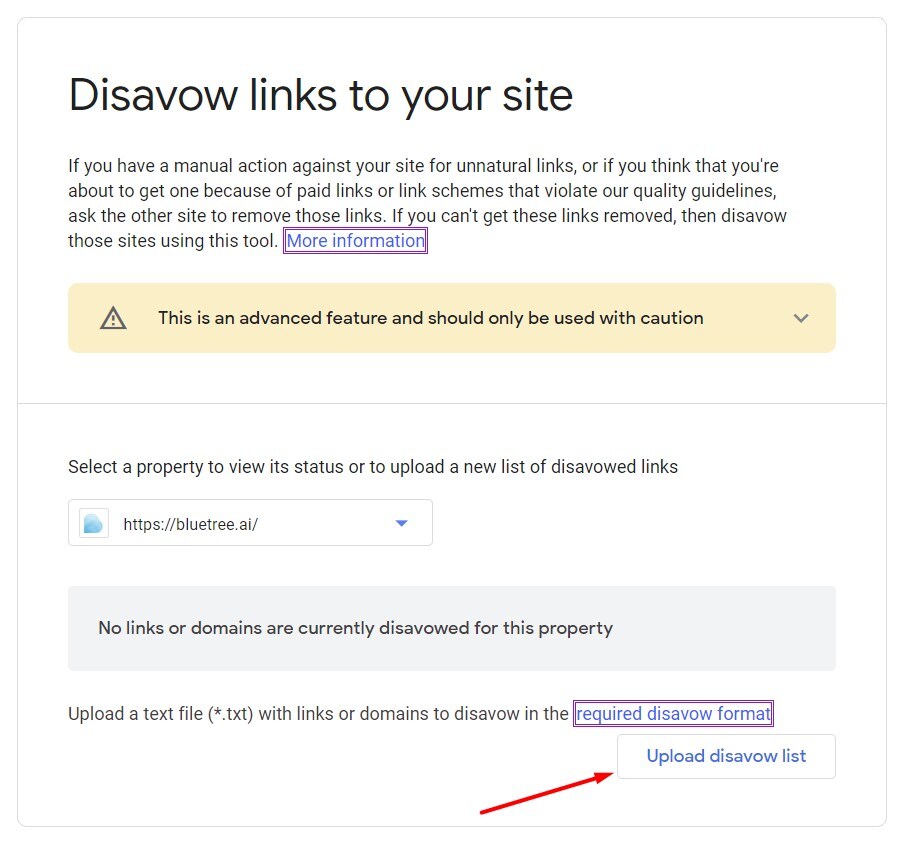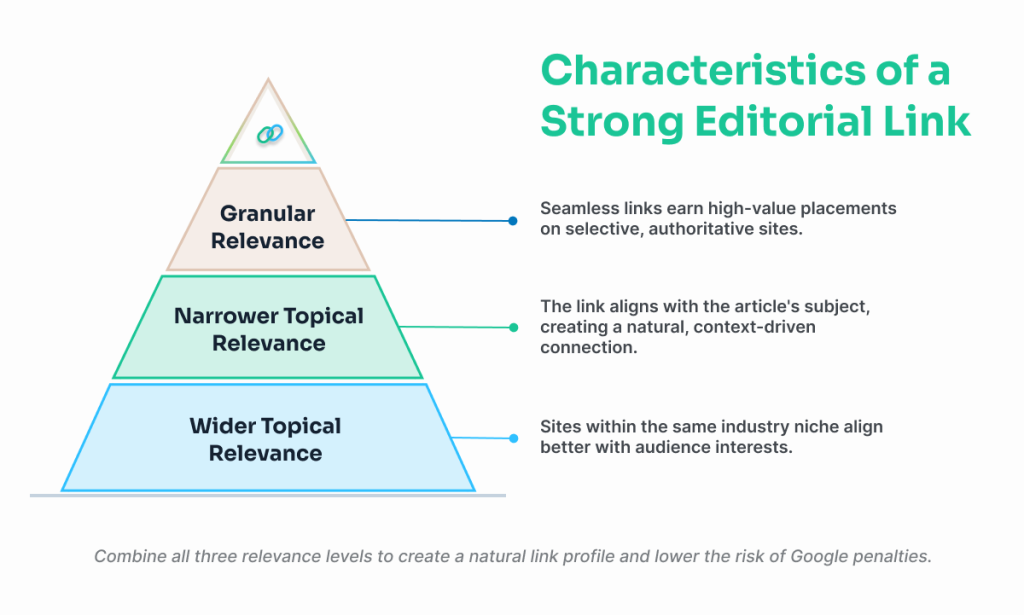Backlink analysis is where rankings and revenue start compounding. It’s the difference between “more links” and “the right links, in the right places, at the right pace.”
If you’ve felt the pain of stalled positions, mysterious drops, or wasted outreach, this is your blueprint.
In this article, I lead with answers, then show you how to execute. You’ll see actionable checklists, tables, and page-level tactics you can deploy this week.
We’ll break down what backlink analysis really is, why it changes outcomes, how to do it with precision, and what to do with the data once you have it.
In this article…
- What is Backlink Analysis?
- Why Perform a Backlink Analysis?
- How To Perform a Backlink Analysis
- Do This With Your Backlink Data
- How Often Should You Audit Backlinks?
- Do You Need to Disavow?
- Why Link Source Quality Beats Quantity
- How To Turn Analysis Into a 90-Day Roadmap
- Tools You’ll Use
- Conclusion
- FAQ – Backlink Analysis
Key Takeaways
- Topical relevance + editorial context + trusted sources outperform raw link counts in competitive SERPs.
- Use multiple indexes (Ahrefs, Semrush, Majestic, Moz) to avoid blind spots and bias.
- Paid/UGC links must be qualified (sponsored, ugc, nofollow) – disavow is a last resort.
- Set page-level RD targets and anchor guardrails based on the current top 3.
- Deliverables = RD targets, risk register, link reclamation list, and a prospect universe mapped to pages.
What is Backlink Analysis?
Backlink analysis is a diagnostic audit of all links pointing to your site. It evaluates relevance, authority, diversity, and risk so you can double down on what moves rankings and eliminate what drags you down.
Most teams chase vanity metrics; pros read signals and that’s where the value resides.

Backlink analysis translates raw link data into decisions. You’re mapping who links to you, where equity flows, and how link context and attributes affect pass-through value.
Use vendor metrics to triage. Ahrefs’ Domain Rating (DR) shows relative backlink strength on a 0–100 logarithmic scale.
Majestic’s Trust Flow (TF) infers trust from proximity to seed sites. Semrush’s Toxicity Score aggregates ~45+ risk markers.
Moz Spam Score highlights suspicious patterns. These lenses overlap but aren’t interchangeable which is why you cross-reference before acting.
Core Signals at a Glance
| Signal | What It Indicates | Scale/Type | Primary Source |
| Domain Rating (DR) | Relative strength of a domain’s backlink profile | 0–100, log scale | Ahrefs |
| Trust Flow (TF) | Trust quality inferred from seed-site proximity | 0–100 | Majestic |
| Toxicity Score | Probability a backlink is risky (45+ markers) | 0–100 | Semrush |
| Spam Score | Likelihood a domain resembles penalized patterns | % / categorical | Moz (glossaries, docs) |
Fast distinctions that matter:
DR ≠ trust: A high-DR site can still be off-topic or risky so TF and topical context help avoid traps.
Attributes matter: Google’s guidance: use sponsored, ugc, nofollow where appropriate; multiple values can be combined (e.g., nofollow sponsored). These are hints, not hard blocks, but correct labeling reduces risk.
Why Perform a Backlink Analysis?
Because links still move rankings and the wrong links quietly cap them. Analysis shows what to protect, what to build, and what to remove, so you stop wasting budget.
The twist? Most teams measure the wrong signals. We’ll fix that and give you a roadmap.

A rigorous audit tells you whether your authority deficit is domain-wide, page-level, topical, or risk-driven. You’re not merely counting links – you’re classifying influence and threat.
That means checking page-level RD gaps, anchor distribution, link velocity, and risk patterns.
Industry playbooks and tool docs converge on the same principle: focus on editorial, topical, follow links; qualify paid/UGC links with the right rel values; and reserve disavow for rare, manual-action scenarios.
Numbered outcomes you can plan for:
- Diagnosis: Identify irrelevant clusters, manipulative anchors, and toxic patterns.
- Prioritization: Direct link equity to URLs where marginal links move the needle.
- Opportunity mining: Reverse-engineer competitor links you can realistically replicate.
- Risk control: Fix mis-labeled links; remove or replace truly harmful ones; disavow only when warranted.
How To Perform a Backlink Analysis
Pull backlinks from multiple indexes, normalize and dedupe, score relevance/authority/risk, benchmark against the top 3 URLs, fix labels and toxic clusters, reclaim lost links, then turn gaps into page-level RD targets and a prioritized prospect list. Now let’s build the pipeline.
1. Collect Comprehensive Link Data
Export from at least three sources: Ahrefs (backlinks & referring domains with DR, anchors, dates), Semrush (authority indicators, link attributes, Toxicity Score and markers), and Majestic (TF and topical categories).

Add Moz if you want more spam pattern context. Different crawlers see different parts of the web; triangulation reduces blind spots.
Why triangulate? Independent roundups in 2025 still place Ahrefs/Semrush/Majestic/Moz among the top for link discovery/analysis, with tool roles that complement each other.
2. Normalize & Dedupe (Build One Truth Table)
Merge CSVs into a single sheet or database. Dedupe by canonical source_url and source_domain. Standardize rel attributes and bucket anchors (Brand/URL, Partial, Exact). Add fields for DR, TF, Toxicity, Spam flags, topical category, first/last seen, and whether the link is editorial (body context) or boilerplate (nav/footer).
Schema you’ll actually use
| Column | Purpose |
| source_url / source_domain | Linking page & root domain (canonicalized) |
| target_url | Your receiving URL |
| rel_attribute | follow / nofollow / ugc / sponsored |
| anchor_text / anchor_bucket | Raw anchor + category |
| ahrefs_dr / majestic_tf | Authority & trust proxies |
| semrush_toxicity / moz_spam_flag | Risk indicators |
| topical_category | From Majestic or manual tagging |
| first_seen / last_seen | Stability signals |
| is_editorial | Content area vs boilerplate |
| is_lost | Track reclamation opportunities |
Use Google’s official guidance to normalize rel and remember you can combine values (rel=”nofollow sponsored” or rel=”ugc sponsored”). These signal relationships and reduce manual-action risk.
3. Diagnose: Relevance → Authority → Risk (In That Order)
Score each domain/link on three axes:
Practical filters you’ll use today
- High-value targets: relevance>=2 AND authority>=2 AND risk>=2
- Fix or tag: risk<=1 AND rel_attribute NOT IN (‘sponsored’,’ugc’)
- Review anchors: anchor_bucket=’exact’ AND authority=3 (ensure natural context)
- Chop candidates: risk=0 AND authority=0 (investigate/remove; disavow only if necessary)
4. Anchor Text Analysis (Guardrails That Scale)
Start brand-first. Most stable profiles lean heavily on brand/URL anchors, with measured use of partial-match and sparse exact-match.

Compare your page-level distribution to the top 3 ranking URLs for that exact SERP; adjust guardrails by page to match what Google already rewards.
- Baseline (adjust per SERP): Brand/URL 50–70%; Partial 20–40%; Exact 0–10%.
- Flag if exact-match creeps past ~10–15% on low-trust domains.
- Fix by requesting anchor edits, adding branded/editorial links, and strengthening internal linking to diversify signals. Backlinko’s audit examples show how anchor clean-up + reclamation drive measurable rebounds.
Example Anchor Mix vs. SERP Leaders (Category URL)
| Bucket | Your Page | #1 | #2 | #3 | Target |
| Brand/URL | 41% | 58% | 53% | 52% | 50–70% |
| Partial | 47% | 33% | 38% | 39% | 20–40% |
| Exact | 12% | 9% | 9% | 9% | 0–10% |
5. Competitive Benchmarking (URL-Level, Not Just Domain)
Benchmark per target URL because that’s where rankings move:
- Referring domains (RD) by authority bands (e.g., DR 40–70 for “attainable + valuable”).
- Topical fit (Majestic topical categories) relative to your page.
- Anchor mix and link velocity (RD/90d) vs. leaders.
- Gap math: Median RD of top 3 – your RD = goal.
Independent reviews still rank Ahrefs/Semrush as best-in-class for competitor backlink discovery, while Majestic helps verify topical trust. Use the trio for clean diffs.
Comparison Table
| Metric | Your URL | #1 | #2 | #3 | Notes |
| RD (total) | 36 | 52 | 49 | 44 | Need +8–12 RD |
| RD (DR 40–70) | 18 | 28 | 24 | 22 | Prioritize this band |
| Avg topical fit (TF topic) | Medium | High | Medium | High | Get niche sources |
| Anchor mix B/P/E | 41/47/12 | 57/34/9 | 53/38/9 | 52/39/9 | Reduce exact |
| Link velocity (90d) | +5 | +9 | +7 | +6 | Increase cadence |
6. Risk Management (Fix, Label, Replace, Disavow Last)
Fix labels first. Paid placements → sponsored (optionally with nofollow), UGC → ugc, citations you don’t endorse → nofollow.
Correct labeling aligns with Google’s policy and prevents issues downstream. Semrush’s Toxicity markers flag suspicious neighborhoods; investigate clusters before acting.
Disavow is a last resort reserved for manual actions or unremovable link schemes. Google itself advises most sites won’t need it.
Action by Scenario
| Scenario | Action | Why |
| Mis-labeled paid/UGC | Add rel=”sponsored” or rel=”ugc” | Compliance & clarity to Google. |
| Suspicious clusters | Remove/replace; add safer links | Lowers risk without gutting equity. |
| Over-optimized anchors | Request edits; add branded links | Normalizes profile, reduces volatility. |
| Manual action risk | Compile disavow (URL/domain) | Rare, but necessary when removals fail. |
Do This With Your Backlink Data
Segment links, fix risks, reclaim lost equity, and turn RD gaps into an outreach pipeline.
The play isn’t “more outreach.” It’s smarter outreach mapped to page goals, topical fit, and publisher intent. Now the exact moves.
1. Build a Prospect Universe
- Filters: DR 40–70 or TF 15–30; editorial follow; topical category ≈ your page; recent links (<12 months).
- Overlap: Sites linking to 2+ competitors are warmer.
- Angles that land:
- Replace/update stale resources with your fresher guide or data.
- Cite your proprietary study (citation link).
- Share a case study with quantified outcomes.
- Offer a tool/template tied to their topic.
- Replace/update stale resources with your fresher guide or data.
2. Reclaim Lost Link Equity
- Export lost links (6–12 months).
- Prioritize editorial follow from high DR/TF sources.
- Redirect 404s to the closest relevant URL; request updates for soft 404s or moved content.
Backlinko’s audit examples show meaningful recoveries once lost links and misdirected equity are fixed.
3. Engineer Internal Links to Funnel New Equity
- Map supporting pages → money pages with descriptive, natural anchors.
- Add 3–5 internal links from fresh content to each target page.
- Keep anchor diversity: favor branded/topical phrases over exact matches.
4. Set Page-Level RD Targets & Cadence
- Compute target: median RD of top 3 – your RD = goal.
- Specify bands: e.g., “70% of +10 RD in DR 40–70; 30% in DR 71+ if attainable.”
- Cadence: If leaders add +7 RD/90d, plan for +8–10/90d until you overtake; maintain at parity afterward.
5. Operationalize
- Cadence: Quarterly deep audits; monthly mini-audits for priority URLs.
- Alerts: Lost links, competitor velocity spikes, Toxicity surges, anchor drift.
- Ownership: One owner each for data hygiene, remediation, outreach.
Tool roundups rank Ahrefs/Semrush for new/lost RD and link management; Majestic for topical shifts.
How Often Should You Audit Backlinks?
Quarterly by default; monthly if you’re scaling link building or in volatile SERPs. Always monitor lost links with alerts.
The bonus move? Run URL-level checkups after migrations, major redesigns, or sudden ranking swings.
WhitePress, Embarque, and other practitioners stress structured workflows: centralize data, segment links, and translate audits into actions.

If you’re actively building links, anchors drift and risk patterns evolve; a 30-minute monthly review keeps you ahead of issues and aligned with revenue priorities.
Competitor surveillance (new RD, velocity) should be always-on. Catch surges early, intercept “lost” opportunities, and adjust your prospecting queue accordingly.
Checklist (quick):
Do You Need to Disavow?
Only when there’s a manual action or a high likelihood of one and you can’t remove the links. Otherwise, Google says it usually ignores junk. Fix labels, remove what you can, and focus on building better links.
Google’s Qualify Outbound Links documentation explains how to label paid/UGC/citation links, and its guidance on the evolving nofollow notes that combined values (e.g., rel=”ugc sponsored”) are valid.

Semrush’s Toxicity markers are helpful for triage, but don’t mistake detection for penalty. When you truly need to disavow, compile a minimal list (domain-level when patterns are domain-wide), upload via Search Console, and monitor over weeks.
Decision tree:
- Manual action present/likely? If no → don’t disavow.
- Removals/rel-tags feasible? If yes → fix at source.
- If unremovable and risky: Disavow (URL/domain), document rationale.
Backlinko’s audit guide and modern agency posts echo this restraint and disavow is the exception, not the strategy.
Why Link Source Quality Beats Quantity
A single editorial, topical, follow link on a page real humans read can outperform 50 weak placements. Google rewards relevance and context; vendor authority scores only help you find likely winners.

Majestic’s TF helps avoid high-DR, off-topic traps. Ahrefs’ DR gives triage at scale but can’t replace context.
Semrush’s Toxicity markers catch ugly footprints before they spread. Combine these with Google’s attribute guidance and you’ll build a profile that grows safely – and survives updates.
Tool reviews keep landing on the same stack: Ahrefs/Semrush/Majestic (Moz as a useful add-on). Focus your time on publishers your buyers trust, not just metrics.
How To Turn Analysis Into a 90-Day Roadmap
Your audit should end with sprint-ready tasks. Pick 3–6 URLs, set RD goals, clean anchors, fix risks, reclaim equity, and run a focused outreach cadence. That’s how rankings – and revenue – move.
Sample 90-day plan
- Weeks 1–2: Merge data, run diagnostics, ship redirect fixes, reclaim lost links.
- Weeks 3–4: Correct rel labels; publish 2–3 linkable assets that map to prospect interests.
- Weeks 5–8: Outreach at 30–50 pitches/week; prioritize DR 40–70 + niche relevance.
- Weeks 9–12: Track new RD, anchor drift, and Toxicity; replace any risky wins with safer editorial placements; report outcomes.
One-page stakeholder snapshot
| KPI | This Month | Prior | Δ |
| New RD (total) | 22 | 14 | +8 |
| New RD (DR 40–70) | 16 | 9 | +7 |
| Lost RD Reclaimed | 11 | 3 | +8 |
| High-risk Links Fixed | 7 | 0 | +7 |
| Target URLs ≥ RD goal | 3/6 | 1/6 | +2 |
If you’re scaling content and link ops with AI, maintain quality control and policy compliance. Ecommerce teams should map RD targets to category/product templates tied to revenue.
Tools You’ll Use
Ahrefs for breadth and competitor diffs; Semrush for risk scoring & management; Majestic for topical trust; Moz for spam patterns. Cross-reference to avoid index bias. 2025 roundups still rank these at the top for link analysis.
Tool by Primary Use Case
| Use Case | Best Tools | Why It Matters |
| Broad discovery & RD gaps | Ahrefs, Semrush | Large indexes + competitor diffs. |
| Trust & topical context | Majestic | Seed-based trust signals and categories. |
| Risk screening & remediation | Semrush, Moz | Toxic markers + disavow workflows, spam patterns. |
| Market validation | TechRadar | Independent rankings; tool strengths evolve. |
Conclusion
Backlink analysis is a system. You triangulate data, normalize it, diagnose by relevance/authority/risk, then benchmark at the URL level.
You fix labels, reclaim what you’ve lost, and build editorial, topical, follow links at the cadence your SERP demands. Do that, and rankings move predictably even in crowded markets.
When you’re ready to push harder, build programs that prioritize quality placements over raw counts. If pipeline matters as much as positions, structure your outreach around publishers your buyers actually read.
FAQ – Backlink Analysis
What matters more – DR or TF?
Different lenses. DR = backlink strength; TF = trust proximity. Use both, but always check topical fit and context.
How often should I audit?
Quarterly by default; monthly if you’re scaling link building or see volatility. Always monitor lost links with alerts.
Do nofollow/ugc/sponsored pass value?
Google treats them as hints; label correctly to reduce risk. Natural editorial follow links remain the engine of growth.
When should I disavow?
Only with a manual action (or likely one) when removals aren’t possible. Otherwise, focus on building better links.
What anchor mix is safest?
Brand/URL heavy, partial-match moderate, exact-match sparing; benchmark per-page vs. the current top 3.
Which tools are best for competitor gaps?
Ahrefs/Semrush for discovery & diffs; Majestic for topical trust; Moz for spam patterns.
Do link velocity spikes help?
Only if they’re editorial and topical. Sudden surges from low-trust sources can hurt more than help. Use cadence relative to leaders.
What’s the fastest win?
Lost link reclamation after migrations or content moves; redirect and outreach to update links.




